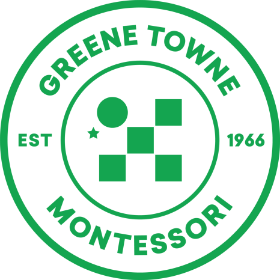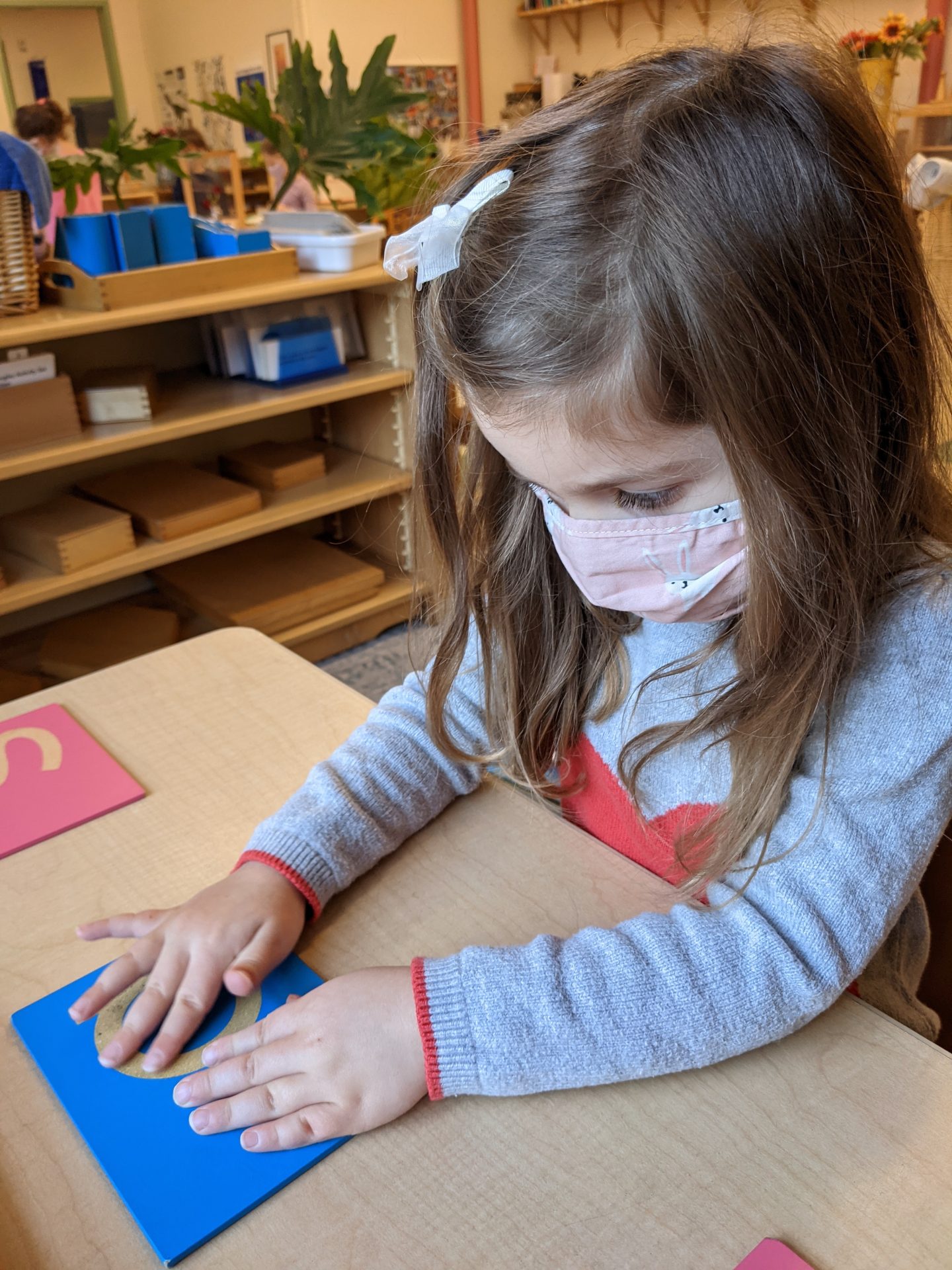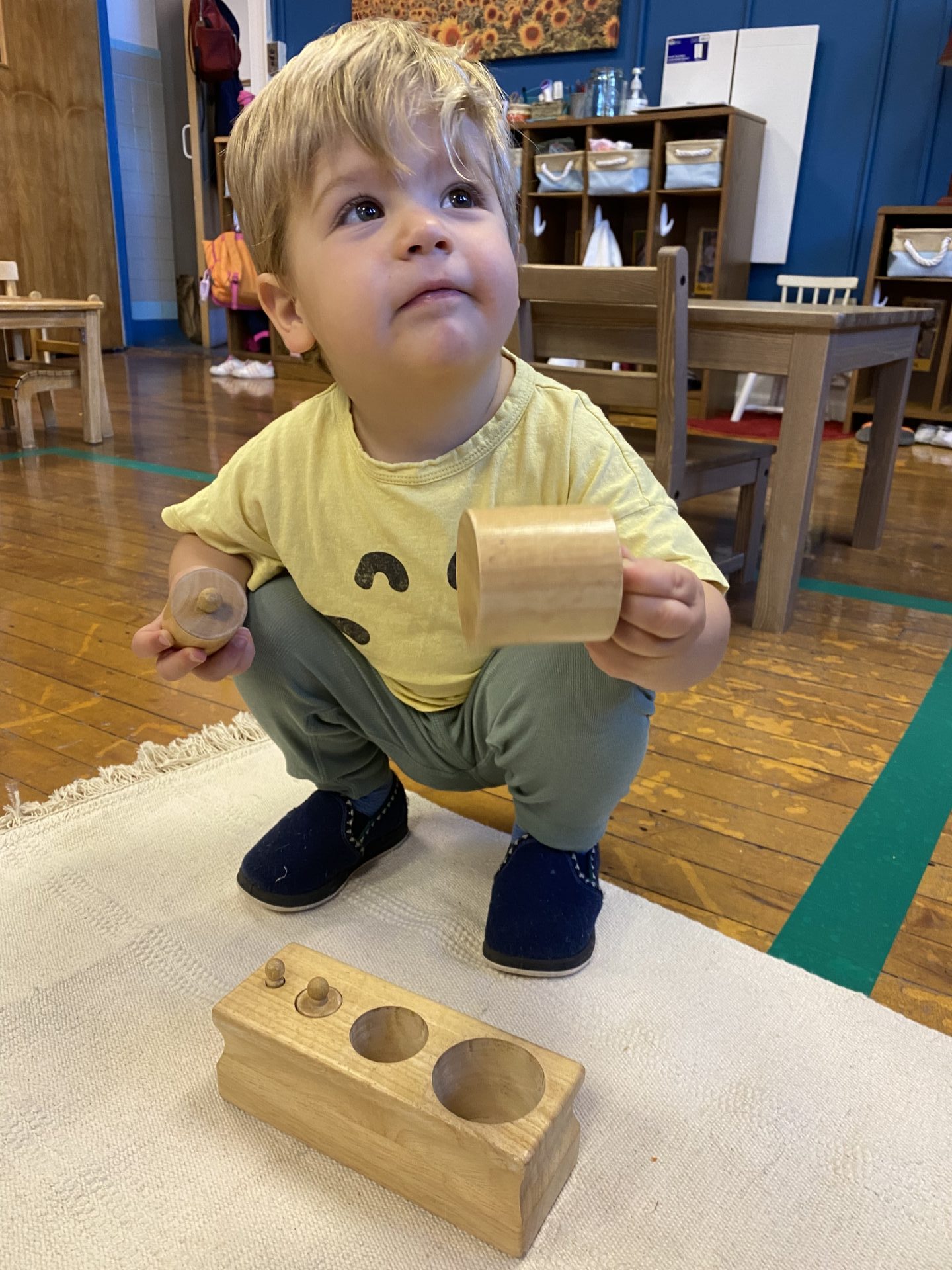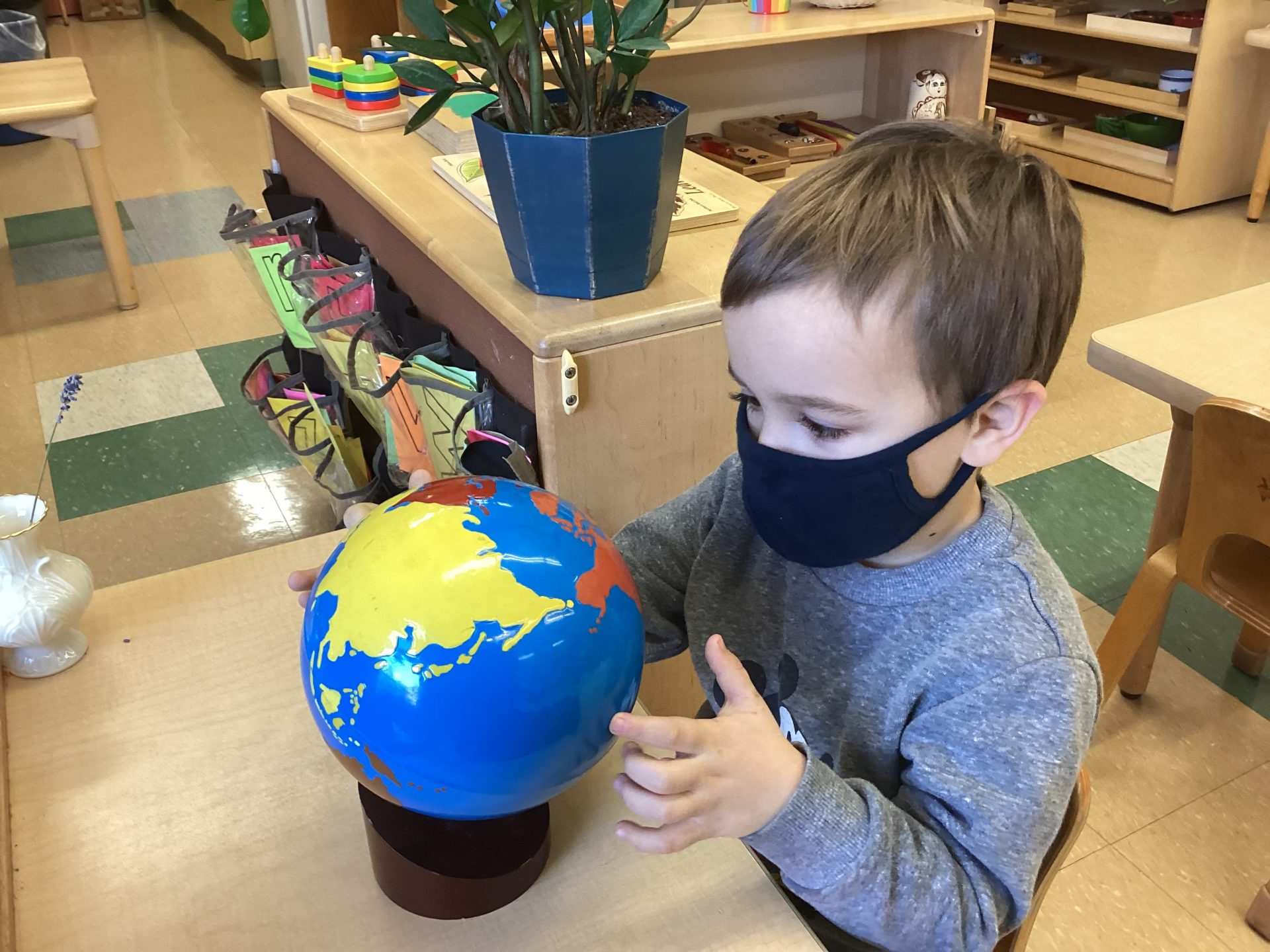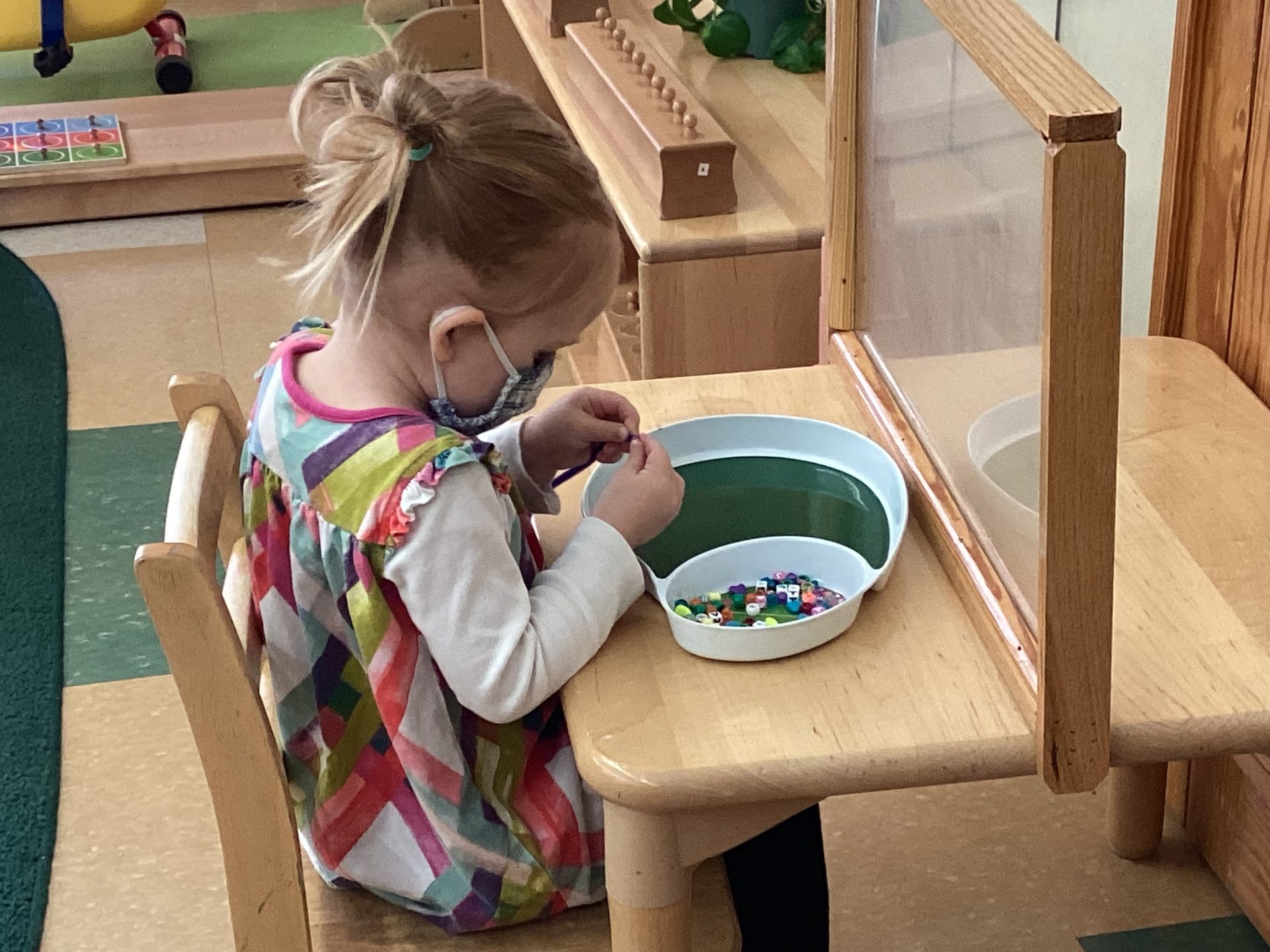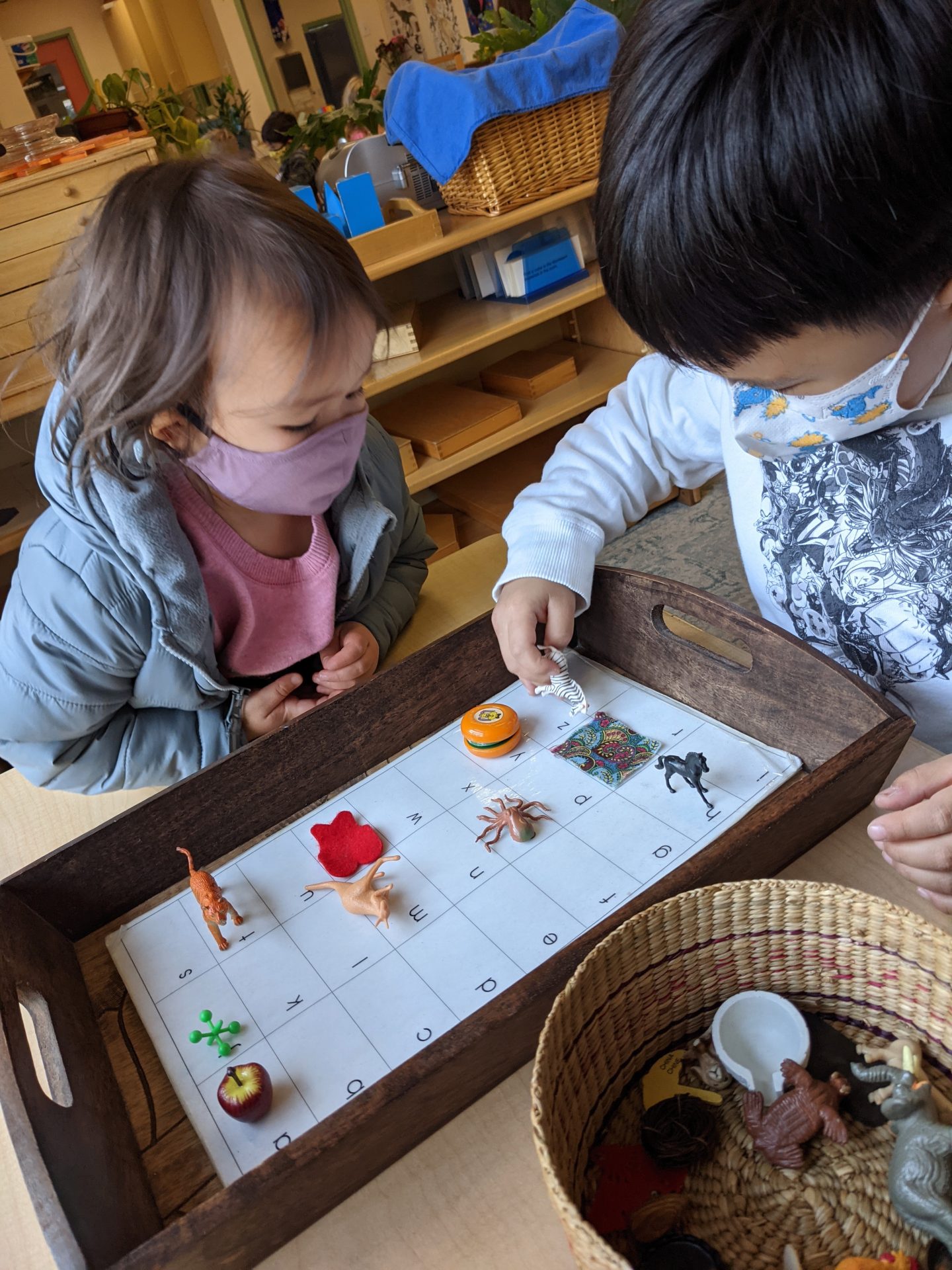Classic and Contemporary
Montessori Philosophy and Curriculum at Greene Towne
The Basics of Montessori Education
Over one hundred years ago, Maria Montessori, a pioneering educator and the first woman in Italy to earn a medical degree, revolutionized education by recognizing that young children are sensorial learners. In the specially prepared environment of the Montessori classroom, children learn by using manipulative materials designed specifically for their young minds and bodies. The wide variety of flexible materials promotes a logical progression of cognitive development, motor skills and social interaction at each child’s individual pace. The Montessori program is designed to encourage and enhance a child’s natural love of learning and discovery and serves the needs of the whole child, emotionally, socially, physically, and intellectually. In our classrooms we emphasize courtesy towards others and nurture a curiosity about the world around us. Respect for the individual child is the hallmark of Montessori education. In such an environment, supported by the teacher’s sensitivity to each child’s needs, the child is able to grow in competence, self-esteem and maturity.
Greene Towne’s Curriculum Scope and Sequence
The GTMS Curriculum Scope and Sequence document outlines in great detail the Montessori philosophy and Greene Towne’s approach to serving the needs of the whole child.
Introduction to Montessori from the American Montessori Society
For a program to be considered authentically Montessori it must include multiage groupings that foster peer learning, uninterrupted blocks of work time, and guided choice of work activity. In addition, a full complement of specially designed Montessori learning materials are meticulously arranged and available for use in an aesthetically pleasing environment.
